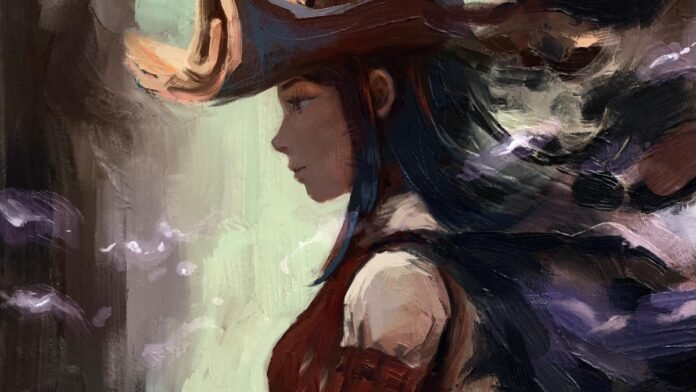Photo: Wikimedia Commons/David Revoy
Each style of art has its own unique quality. Claude Monet is known for founding Impressionism, where the thin strokes used to create a painting are visible to the eye of the beholder. Then there is Yves Klein, known for painting only with blue. Paintings and artworks done with specific shapes and dots are two of many other examples.
talking texture
Have you ever tried painting with acrylic or oil colors, but you accidentally leave the paint on the palette for too long and it dries, sticking to the surface? Now imagine the same dried paint on canvas. One of the main features that makes this style of painting so unique is that one can recognize it through touch.
No matter how different two different paintings may look, the texture will almost always be the same. Impasto painting is done through the process of applying paint very thickly to a canvas with a brush or painting knife so that the strokes are visible and the color emerges from the surface. It provides spectacular, dramatic visual effects that give artwork a new lease of life. To make the paint even thicker, some artists mix it with wax. This style not only involves applying the paint after it is ready, but the paint can also be mixed directly onto the canvas!
Origin and first painter
When you hear the word ‘impasto’, what’s the first word you associate with it? pasta? Paste? Well, both the answers are completely valid, as the word is derived from the Italian language word meaning ‘sticking’ or ‘potting technique’. And the root of the word is the noun ‘pasta’, which is Italian for ‘paste’.
While Vincent Van Gogh is considered the master of this technique, many of his works, including ‘Starry Night’, clearly demonstrate the depth of his brushstrokes and a strong emotion conveyed through colours. However, the first known users of this type of art style were considered to be the painters Titian and Tintoretto, whose artworks were rich in color and life with a strong tactile characteristic. Not only this, the freedom displayed in his loose brushstrokes provides a new form of grandeur in his artworks.
Why push the limits of canvas?
This type of art style focuses more on artworks, moving from the sense of sight to the sense of touch. But why do this? Why do some artists choose to truly break down the barriers of painting, move beyond canvas and move from 2D to 3D? Well, there are many answers to that one question. But each of those ideas goes back to a common value: exploration. A writer can never really know what different futures the story might lead to. In the same way, when it comes to art, nothing is off limits when it comes to creativity, imagination and curiosity.
It is likely that this little bird of a question would have chirped in the creative minds of the artists of the Italian Renaissance: “Why should paint be thin and confined to the surface of the canvas?” Or put more simply, “What if people could touch art?” This art form not only provided a symbolic way of expression, but the thick strokes of the art help demonstrate and preserve the artists’ skills over time.
published – October 07, 2025 06:09 PM IST
